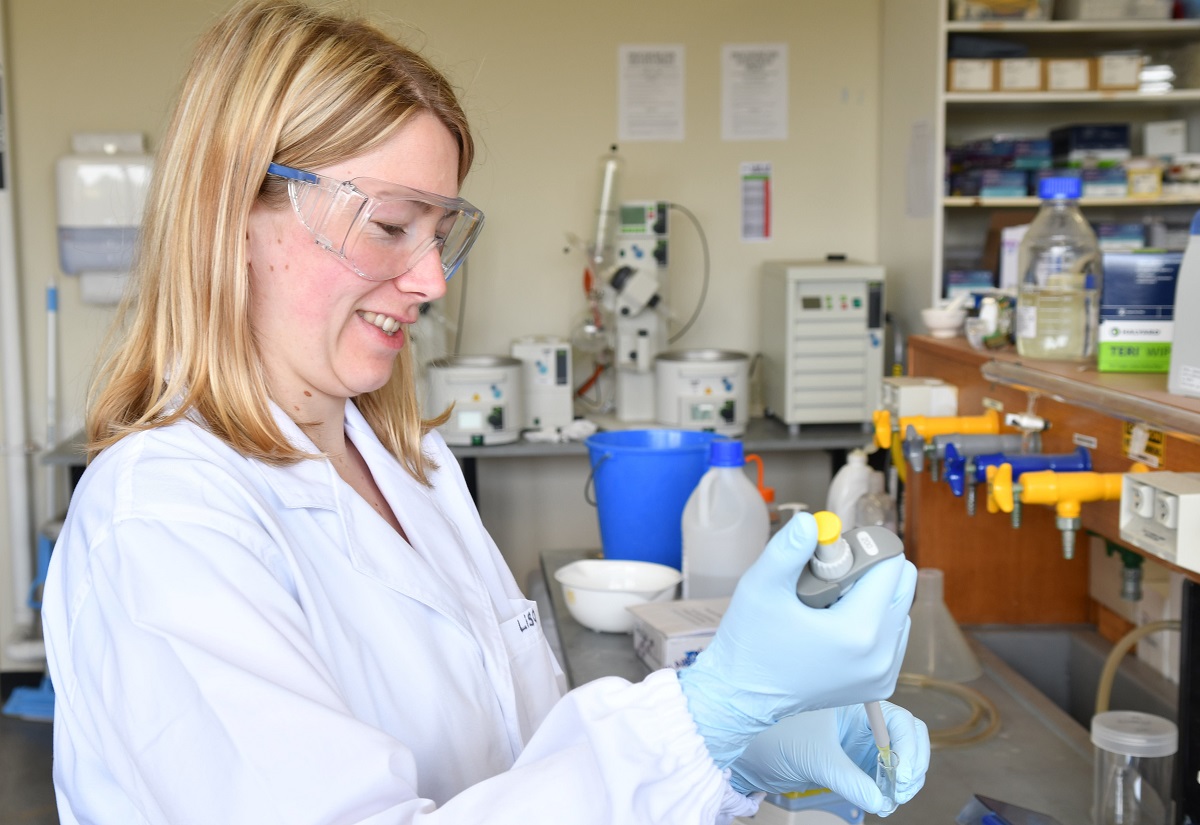
The process of oxidative stress, a body imbalance that modifies proteins, is a problem associated with heart disease, diabetes and Alzheimer’s disease – yet it remains poorly understood and difficult to detect using traditional methods.
In an important development to better understand this protein modification that is known as cysteine sulfenic acid, researchers at Flinders University’s Institute for NanoScale Science and Technology have invented a new tool that detects a protein modification formed during oxidative stress, working in collaboration with the University of Adelaide and the University of Cambridge.
The study, led by PhD student Lisa Alcock and supervisor Dr Justin Chalker, addressed the need for improved detection by inventing a molecule that reacts rapidly and specifically with cysteine sulfenic acid. The key discovery was to use a “spring loaded” derivative of a molecule called norbornene.
The research team has demonstrated that this molecule is faster-acting and more selective than other methods of detection – and it even works in complex protein mixtures and living cells.
“Our new chemical tool provides an alternative to current methods, and will allow researchers to tap into previously undiscovered cysteine sulfenic acid sites formed during oxidative stress,” says Ms Alcock.
Ms Alcock is currently in the UK, studying at the University of Cambridge’s Department of Chemistry under the supervision of Dr Gonçalo Bernardes, as part of winning an Endeavour Postgraduate Scholarship. She is now using this new tool to map the formation of cysteine sulfenic acid and better understand the cellular consequences of oxidative stress.
“Using our new chemical tool to detect these cysteine sulfenic acid sites could lead us to discover new protein targets of oxidative stress associated with disease states,” says Ms Alcock. “This could lead to developing new therapeutic targets in the fight against these diseases.”
Dr Chalker, Senior Lecturer in Synthetic Chemistry at Flinders University’s College of Science and Engineering, says the new biomarker detection tool has a special significance in the continuing fight to combat cancer and other invasive diseases.
“The ability to map protein oxidation is critical in understanding signalling pathways and biomarkers of disease,” says Dr Chalker. “This tool will help labs around the world in their studies of oxidative stress and the many diseases associated with this condition.
“Understanding the fundamental biochemistry of these diseases is the first step in developing future medical treatments.”
“From a chemistry perspective, this is a remarkable achievement in selectivity: we can treat cells with our compound and the compound reacts specifically with cysteine sulfenic acid. It is like finding a needle in a haystack.”
The paper – Norbornene probes for the detection of cysteine sulfenic acid in cells, by Lisa Alcock, Bruno Oliveira, Michael Deery, Tara Pukala, Michael Perkins, Gonçalo Bernardes and Justin Chalker - has been published in the journal ACS Chemical Biology (DOI: 10.1021/acschembio.8b01104). The paper can be .
Ms Alcock completed key experiments in this research at Adelaide University in collaboration with Associate Professor Tara Pukala and later at Cambridge University in the lab of Dr Gonçalo Bernardes, who was a Flinders Visiting International Research Fellow in 2017 and is a long-standing collaborator with the Chalker Laboratory based at Flinders University.
Ms Alcock will be returning to Flinders University in April 2019.





